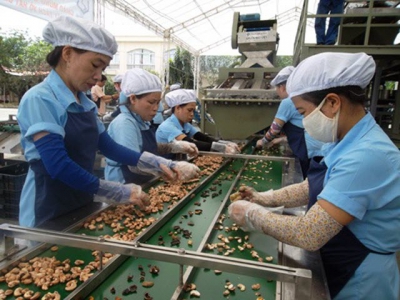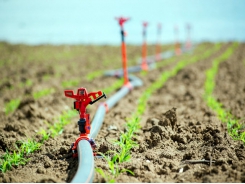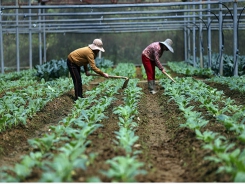Việt Nam needs to restructure cashew production

Việt Nam’s cashew industry would need to restructure production and processing in order to ensure enough raw materials for sustainable development. – Photo baotintuc
Ho Chi Minh City – Việt Nam’s cashew industry would need to restructure production and processing in order to ensure enough raw materials for sustainable development, according to experts.
In a restructuring programme of the cashew industry, scientists have suggested that cashew growing regions with trees more than 20 years old needed to plant new varieties that were more productive and resistant to pests.
Minister of Agriculture and Rural Development Nguyễn Xuân Cường said the restructuring of the cashew industry must be carried out comprehensively. Specifically, productivity must increase by 50 per cent. The production process should be developed following organic standards
For increased cashew productivity, Nguyễn Thanh Phương, deputy director of the Agricultural Science Institute for Southern Coastal Central of Việt Nam (ASISOV), said many varieties of cashews had been tested and trial production had resulted in high productivity.
These varieties had been recognised by the Ministry of Agriculture and Rural Development (MARD) and put on mass production. After five years of cultivation, output had reached more than 1.5 tonnes per ha with high quality, Phương said.
The Việt Nam Cashew Association has also asked MARD to co-operate with Cambodia to develop cashew production, providing raw material for the domestic processing industry.
The Cambodian Ministry of Agriculture, Forestry and Fishery has approved a 500,000ha cashew area to be developed by a Vietnamese firm. The plantation is expected to supply one million tonnes of raw materials to Vietnamese enterprises each year.
In addition, the sector has also focused on intensive processing and improving the value of cashew nuts, while the Việt Nam Cashew Association has been building an international brand for export purposes.
Cường said the industry should apply scientific and technological advances for production to solve the impacts of bad weather on production.
Cashew processing enterprises have already formed a production chain in association with local authorities and cashew farmers under a co-operative model. This provided stability to all parties to develop the domestic and export markets.
According to MARD, the processing capacity of Việt Nam’s cashew industry stood at 1.8 million tonnes of raw cashew per year, of which intensively-processed products accounted for about 20 per cent of total exports.
This domestic supply of raw materials for processing is not enough so processors must import from African countries. However, some African countries are planning to process their own nuts to improve the value of their product.
Cường said the local cashew industry had to import 70 per cent of raw materials for processing.
Việt Nam has 480 cashew processing plants and 20 per cent of them have intensive processing chains.
According to the Ministry of Industry and Trade, to October 15 this year, cashew nut exports reached 286,000 tonnes, earning US$2.7 billion, up 4.8 per cent in volume but down 1.8 per cent in value year on year.
The decline in value was partly due to a decrease of 5.8 per cent in average export prices in the first nine months to $8,611 per tonne.
Việt Nam’s cashew nuts have been exported to markets such as the US, China, the Netherlands, Germany and Canada.
Có thể bạn quan tâm
Phần mềm

Phối trộn thức ăn chăn nuôi

Pha dung dịch thủy canh

Định mức cho tôm ăn

Phối trộn phân bón NPK

Xác định tỷ lệ tôm sống

Chuyển đổi đơn vị phân bón

Xác định công suất sục khí

Chuyển đổi đơn vị tôm

Tính diện tích nhà kính

Tính thể tích ao hồ




 Long An improves quality of locally grown fruit
Long An improves quality of locally grown fruit  Chinese rice importers visit Việt Nam to find…
Chinese rice importers visit Việt Nam to find…